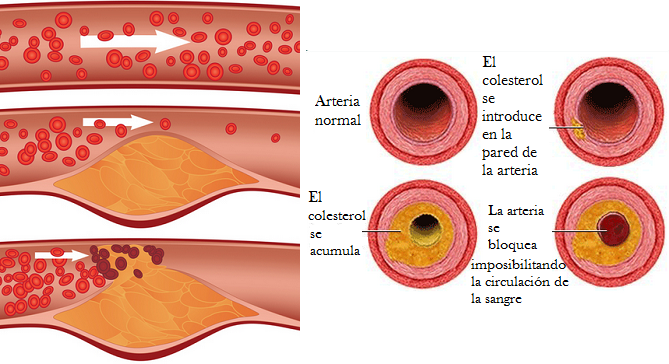Good or HDL and bad or LDL cholesterol, triglycerides, and normal levels

The cholesterol is a lipid (fat) that is part of some hormones and cells of our body. Cholesterol can come from our liver and also from the foods we eat in our diet. Cholesterol carries out several functions in our body such as digesting fats (forming bile) or the formation of sex and thyroid hormones .
Don’t think that high cholesterol is always associated with being overweight. There are people who may be at their ideal weight, or even below, and may have high cholesterol, and this could be due to several reasons as you can read below. We must monitor the lipid profile . As having high «bad» cholesterol is asymptomatic, we can only know its levels through a blood test and thus triglyceride levels are also known . What are triglycerides? It is the fat that is traveling through the blood vessels. High triglyceride levels can cause acute pancreatitis or inflammation of the pancreas and also increase the chances of cardiovascular disease .
Differences between good cholesterol or HDL and bad cholesterol or LDL
Our own liver produces cholesterol that during digestion passes through the wall of the intestine to go into the bloodstream. At this point, cholesterol will bind to macromolecules that are responsible for transporting cholesterol through the blood: lipoproteins.
If the lipoprotein to which the cholesterol has bound is low-density or LDL, it goes to the cells and the excess cholesterol will accumulate in the blood vessels, specifically in the arteries. This accumulation of cholesterol in the artery is called atheroma plaque and can cause serious cardiovascular damage. High LDL causes hypercholesterolemia , which increases the chances of heart attacks. Also, high LDL can cause arteriosclerosis , which is the narrowing of the arteries due to the accumulation of bad cholesterol.
If cholesterol binds to a high-density lipoprotein or HDL, it will return to the liver, «cleaning» the arteries of cholesterol in them, which would be excellent for improving blood circulation through our body. HDL collects excess LDL cholesterol, returning it to the liver where it will be reused to form hormones, bile, etc. or where it will be removed in case it is not needed.
The healthiest thing is to have low LDL and high HDL. But we are going to know more specifically about the cholesterol values.
 .
.
What are normal cholesterol and triglyceride values
The recommendation made by the health authorities are the following:
- Normal cholesterol values (adding good and bad cholesterol) is less than 200 mg / dl
- Normal to high cholesterol values (adding HDL and LDL) would be between 200 and 240 mg / dl
- High cholesterol values (adding HDL and LDL) are above 240 mg / dl
For LDL or bad cholesterol, normal values are below 100 mg / dl, high-normal values between 100 and 160 mg / dl and high values from 160 mg / dl.
For HDL or good cholesterol, normal values are above 35 mg / dl in men and 40 mg / dl in women.
For triglycerides, it is considered to have more than 500 mg / dl as high values, and between 150 to 500 mg / dl as medium-high values, considering less than 150 mg / dl as normal values.
There may be a certain predisposition to having high cholesterol due to familial hypercholesterolemia, even with a healthy lifestyle.
What factors can cause high cholesterol or hypercholesterolemia
Bad eating habits (excess of products of animal origin, trans fats, saturated fats, etc. that contain high levels of LDL cholesterol or bad cholesterol and a low consumption of fruits and vegetables, fiber and other foods with HDL or good cholesterol)
Genetic predisposition
Side effects of medications
Overweight and obesity
To smoke
Do not exercise, sedentary lifestyle.
Type I and II diabetes
Liver malfunction
Hypothyroidism
Alcohol consumption
Renal disease
SHARE THIS ARTICLE!

![Photo of Learn to Plant Corn: [12 Steps] and Much More](https://www.complete-gardening.com/wp-content/uploads/2022/08/learn-to-plant-corn-12-steps-and-much-more-390x220.jpg)


![Photo of Calibrachoa: [Planting, Care, Irrigation, Substrate and Pests]](https://www.complete-gardening.com/wp-content/uploads/2022/08/calibrachoa-planting-care-irrigation-substrate-and-pests-390x220.png)